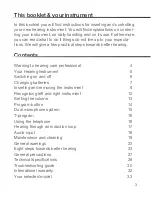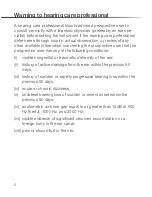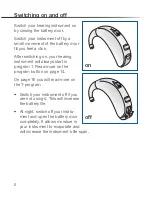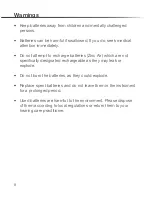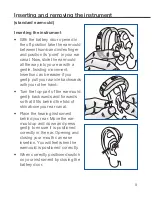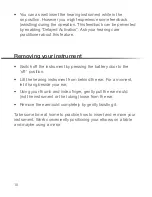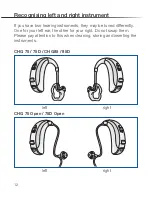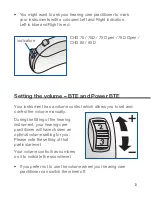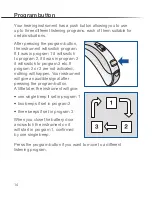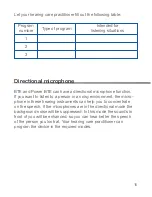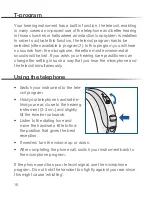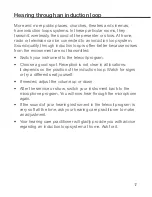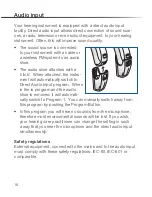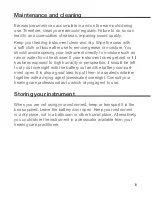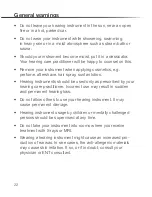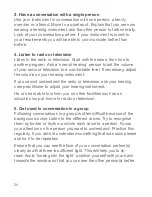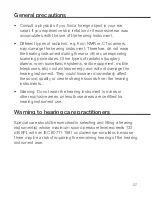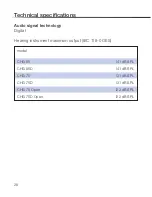
14
Program button
Your hearing instrument has a push button allowing you to use
up to three different listening programs, each of them suitable for
certain situations.
After pressing the program button,
the instrument will switch program.
If it was in program 1 it will switch
to program 2, if it was in program 2
it will switch to program 3 etc. If
program 2 or 3 are not activated,
nothing will happen. Your instrument
will give an audible signal after
pressing the program button.
A little later, the instrument will give:
• one single beep if set in program 1
• two beeps if set in program 2
• three beeps if set in program 3
When you close the battery door
and switch the instrument on it
will start in program 1, confirmed
by one single beep.
Press the program button if you want to move to a different
listening program.



